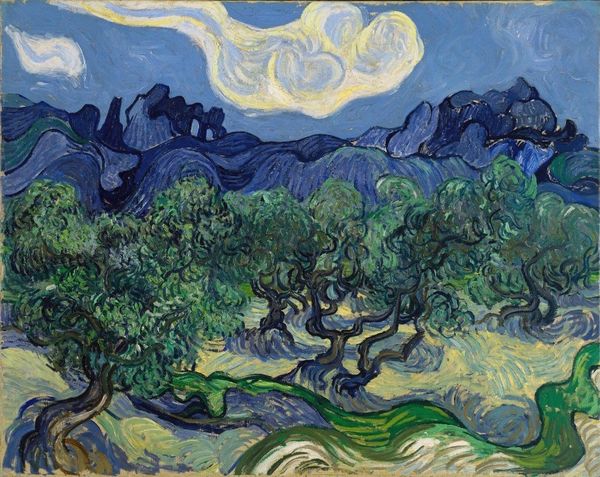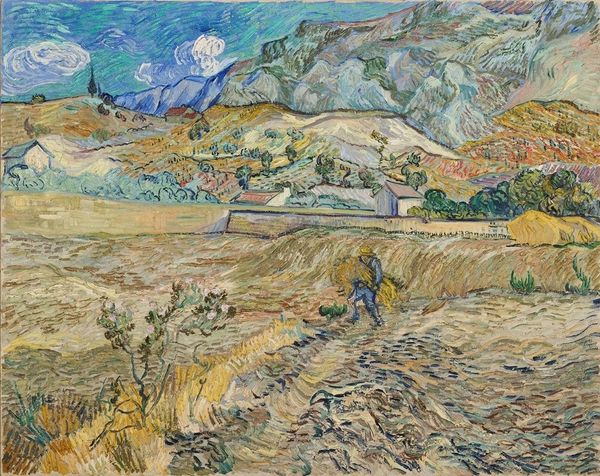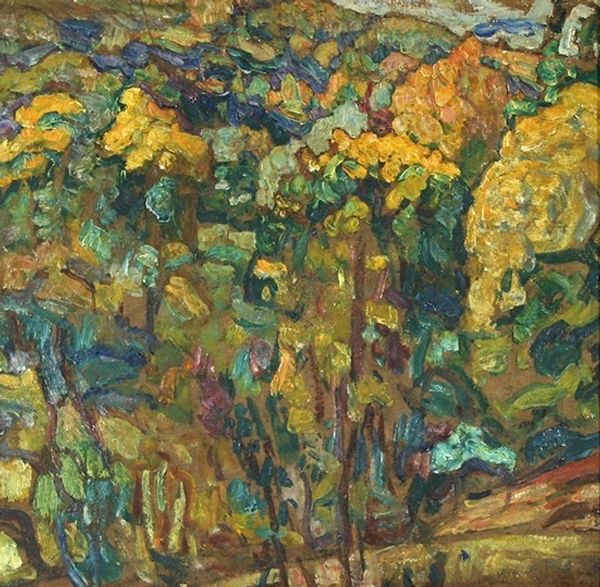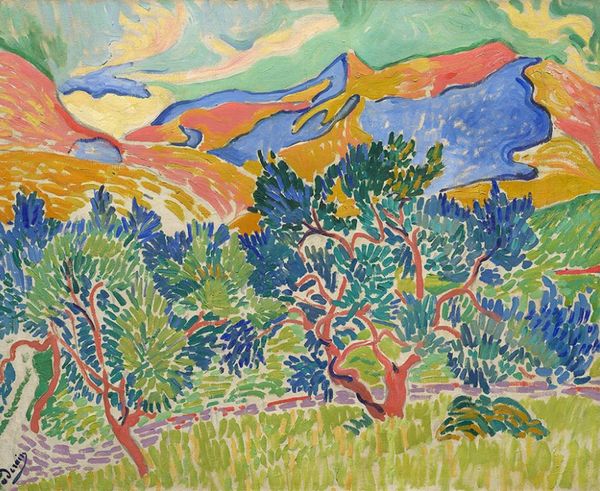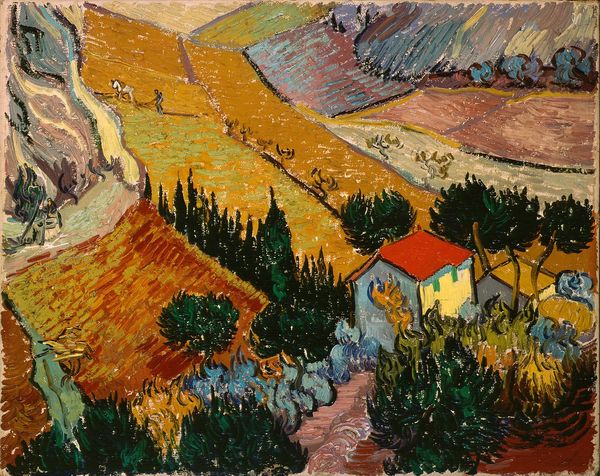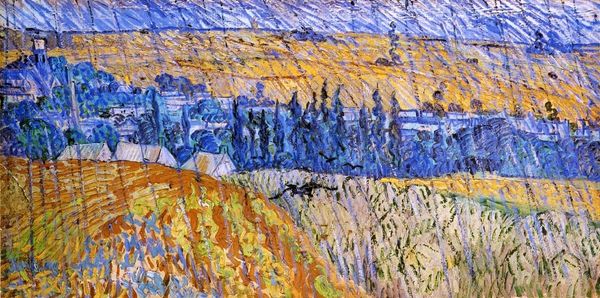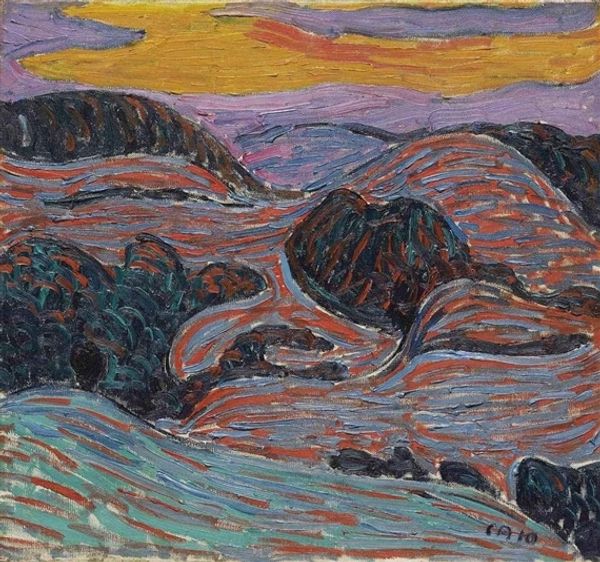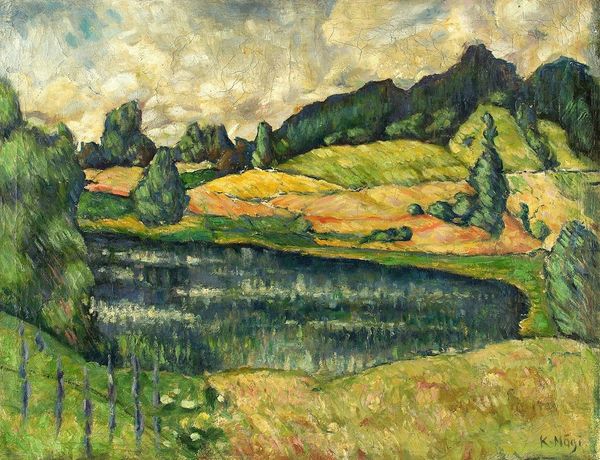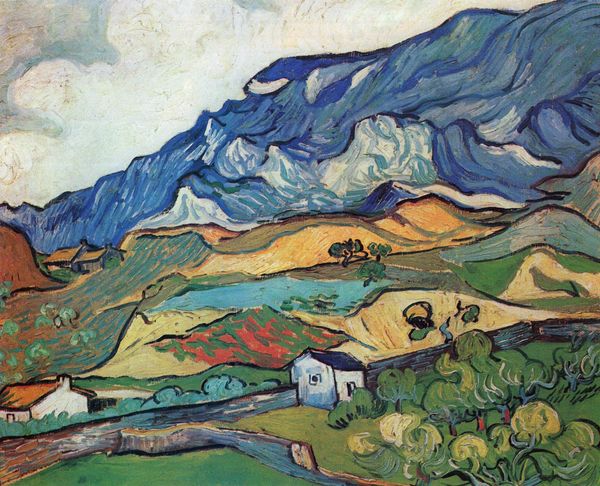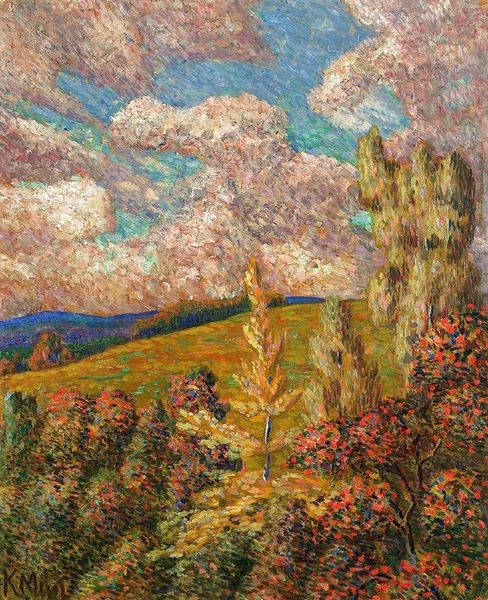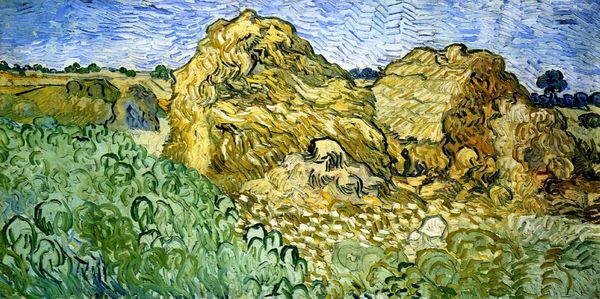
Copyright: Public Domain: Artvee
Editor: Van Gogh's "Two Poplars in the Alpilles near Saint-Rémy," painted in 1889 with oil paints, possesses an incredible energy. The impasto technique makes the paint seem to almost writhe on the canvas. What strikes me is the seemingly dynamic composition and those majestic trees, how do you interpret this work within the context of its time? Curator: What a keen observation regarding the dynamic quality. We must consider Van Gogh's position relative to the artistic institutions of his time. His expressive brushwork and subjective take on landscape were a direct challenge to the academic traditions which favored idealized representations. What effect do you think this type of painting had on the rise of the Avant-Garde movement? Editor: I hadn't thought about it that way, I guess by defying convention, Van Gogh paved the way for future artists to challenge the status quo, didn’t he? But I do wonder about this period in Saint-Rémy, in an asylum… how did that affect his art? Curator: The asylum context is crucial. It speaks volumes about the complex relationship between mental health, artistic creation, and societal reception. His confinement undoubtedly shaped his perception of the landscape. How does this work inform ideas about artistic genius? Is art an inherently “insane” or a socially defined construct? Editor: That’s a fascinating question! Perhaps "genius" is a socially constructed label we apply to those who break free from conventional modes of seeing. Thanks to our chat I see this image in an altogether new light, it challenged everything when it came into existence, even how people understood madness, and still challenges the public perception about art now. Curator: Indeed! Considering Van Gogh's biography in this way helps reveal the complicated intersection between mental illness, art market expectations, and ultimately, lasting artistic recognition. Thanks to your initial observations, it makes me want to revisit how we contextualize Van Gogh for public viewing today.
Comments
No comments
Be the first to comment and join the conversation on the ultimate creative platform.

